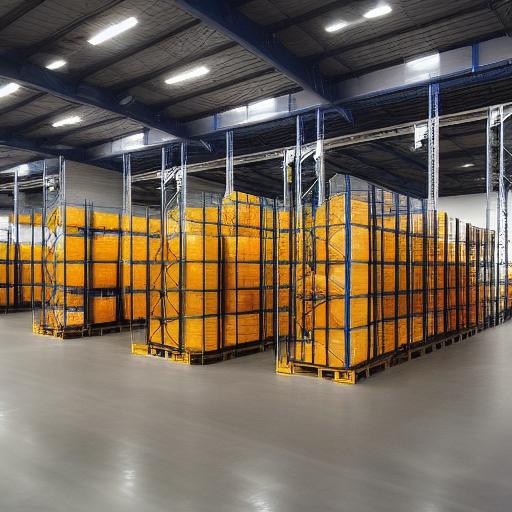
In the rapidly evolving world of warehousing and logistics, efficiency and accuracy are paramount for success. Thanks to cutting-edge technologies like AI-driven computer vision, businesses in this sector have experienced a transformative shift. The YoloV7 model of computer vision stands out as a powerful tool, enabling companies to deploy highly efficient AI models effortlessly through the no-code platform, Navan AI. This article explores the diverse applications of vision AI in warehousing and logistics, showcasing how this technology optimizes inventory management, quality control, package sorting, and warehouse security.
Applications of Vision AI in Warehousing and Logistics:
Real-Time Inventory Tracking: Vision AI enables real-time tracking of inventory, ensuring precise stock counts and minimizing manual errors. By deploying cameras and sensors throughout the warehouse, businesses can accurately monitor inventory levels and automatically update their systems.
Quality Control and Defect Detection: Computer vision helps identify defects and anomalies in products during the quality control process. This technology can swiftly detect issues such as damages, labeling errors, or product defects, ensuring only high-quality items are shipped to customers.
Automated Package Sorting: Vision AI plays a crucial role in automating the package sorting process. Cameras can capture package labels, and AI algorithms can instantly direct each package to the appropriate destination, reducing processing times and human intervention.
Warehouse Layout Optimization: Computer vision assists in optimizing the layout of the warehouse by analyzing the movement of goods and identifying opportunities for better organization. This results in streamlined workflows and reduced time spent locating items.
Predictive Maintenance: Vision AI can be employed to monitor and assess the condition of machinery and equipment in the warehouse. By identifying potential issues in advance, companies can perform preventive maintenance, reducing downtime and maintenance costs.
Real-Time Traffic Management: In large warehouses, the movement of vehicles and personnel can be challenging to manage. Vision AI can monitor traffic flow and identify potential bottlenecks, allowing for timely interventions to maintain smooth operations.
Environmental Monitoring: Computer vision helps monitor environmental conditions within the warehouse, such as temperature, humidity, and air quality. This ensures optimal storage conditions for goods that may require specific environmental settings.
Shelf and Rack Management: AI-powered cameras can scan shelves and racks to determine stock levels and item locations accurately. This information can be used to create efficient picking routes for warehouse employees.
Order Picking Optimization: Vision AI assists in optimizing the order picking process by guiding workers to the exact location of items to be picked, reducing travel time and improving overall efficiency.
Security and Safety Enhancement: Computer vision enhances warehouse security by identifying potential security breaches and alerting security personnel in real-time. It also helps monitor safety protocols, such as identifying unsafe behavior or potential hazards.
Numerous warehousing and logistics companies have embraced vision AI technologies like YoloV7 through platforms like Navan AI to optimize their operations. As AI technology continues to advance, the applications of vision AI in warehousing and logistics will undoubtedly expand, further enhancing efficiency, accuracy, and safety in this critical industry.
Want to add Vision AI to your warehousing and logistics business? Reach us on [email protected] for a free consultation.